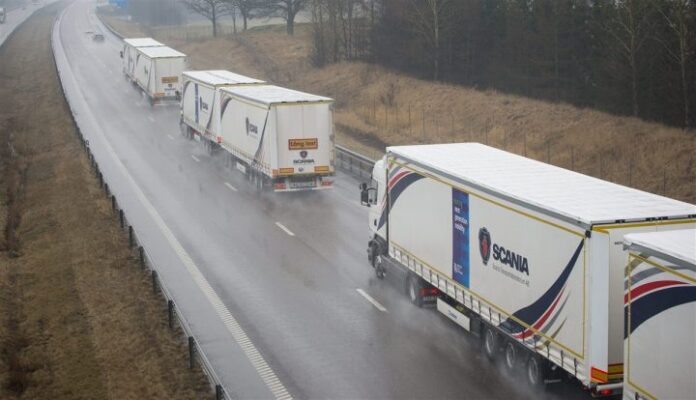Six fleets of self-driving trucks arrived in the Netherlands today from locations in Sweden, Germany, Denmark and Belgium. The trucks used a system called “platooning” in which two or three trucks drive about 50 feet apart, connected by Wi-Fi. Sensors, processors and radios control the trucks, and the second and third trucks in line mimic each of the first truck’s actions without driver intervention. For this experiment, each self-driving truck carried a human as backup.
European Truck Platooning conducted the self-driving truck trial. Volvo, Scania, Daimler, MAN, DAF Trucks and Iveco all created truck platoons for the trial. All six of the platoons converged today in Rotterdam, with the Scania platoon having driven more than 2,000 kilometers to get there.
As each truck manufacturer has its own Wi-Fi network, the truck platoons are not able to join together at this time. Also, each European country has different rules governing truck platoons, so the manufacturers had to work separately with each country that was part of the route.
“There are still plenty of barriers in place, that hinder the launch of this technology,” said Erik Jonnaert, secretary-general of ACEA, the European umbrella group representing the six truck manufacturers. “With this in mind it is good that the Netherlands has taken the lead in positioning these topics high on the European agenda. Cooperation within the EU is crucial in preventing the development of a patchwork of local rules and procedures, strangling progress.”
Governments are getting behind truck platooning as they believe it can reduce costs, carbon emissions and accidents. European Truck Platooning said because the following trucks brake immediately when the first truck brakes, platooning can improve traffic safety. The group also said driving close together at a constant speed means lower fuel consumption and less carbon emissions.
Follow me on Twitter.

